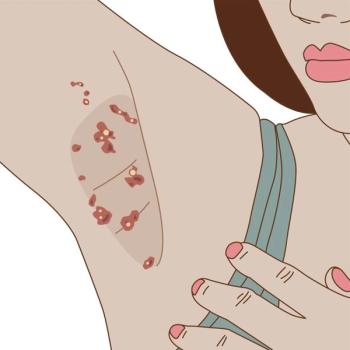
Asteatotic Eczema
With the onset of winter, dry and scaly skin accompanied by pruritus prompted this patient to seek medical attention.
With the onset of winter, dry and scaly skin accompanied by pruritus prompted this patient to seek medical attention. Topical corticosteroids and a change in bathing habits eased the eczematous symptoms.
One of the most common winter dermatoses is dryness of the skin, or asteatotic eczema. This condition is often very pruritic. Cold temperatures and low humidity in winter cause fissures in the stratum corneum that result in scaly, dry, and cracked skin. Asteatotic eczema is also called eczema craquelé.
Medium- to high-potency topical corticosteroids may relieve the cutaneous symptoms. Counsel your patients to prevent recurrences by bathing less often, using cooler bathwater and an emollient-based soap, and generously applying moisturizers.
(Case and photograph courtesy of Caron M. Grin, MD.)
Newsletter
Enhance your clinical practice with the Patient Care newsletter, offering the latest evidence-based guidelines, diagnostic insights, and treatment strategies for primary care physicians.

















































































































































































































































































